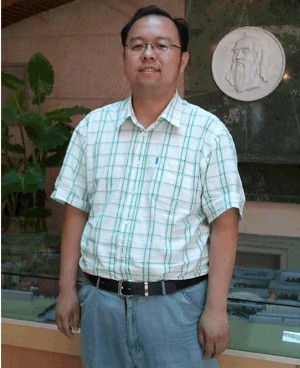北外名师
SAT阅读题型分类——主旨题
发布时间:2016-04-21 Archaeology as a profession faces two major prob-
lems. First, it is the poorest of the poor. Only paltry
sums are available for excavating and even less is avail-
able for publishing the results and preserving the sites
(5) once excavated. Yet archaeologists deal with priceless
objects every day. Second, there is the problem of illegal
excavation, resulting in museum-quality pieces being
sold to the highest bidder.
I would like to make an outrageous suggestion that
(10)would at one stroke provide funds for archaeology and
reduce the amount of illegal digging. I would propose
that scientific archeological expeditions and govern-
mental authorities sell excavated artifacts on the open
market. Such sales would provide substantial funds for
(15) the excavation and preservation of archaeological sites
and the publication of results. At the same time, they
would break the illegal excavator’s grip on the market,
thereby decreasing the inducement to engage in illegal
activities.
(20) You might object that professionals excavate to
acquire knowledge, not money. Moreover, ancient arti-
facts are part of our global cultural heritage, which
should be available for all to appreciate, not sold to the
highest bidder. I agree. Sell nothing that has unique
(25) artistic merit or scientific value. But, you might reply,
everything that comes our of the ground has scientific
value. Here we part company. Theoretically, you may be
correct in claiming that every artifact has potential scien-
tific value. Practically, you are wrong.
(30) I refer to the thousands of pottery vessels and ancient
lamps that are essentially duplicates of one another. In
one small excavation in Cyprus, archaeologists recently
uncovered 2,000 virtually indistinguishable small jugs in
a single courtyard, Even preciousroyal seal impressions
(35) known as/melekh handles have been found in abun-
dance---more than 4,000 examples so far.
The basements of museums are simply not large
enough to store the artifacts that are likely to be discov-
ered in the future. There is not enough money even to
(40) catalogue the finds; as a result, they cannot be found
again and become as inaccessible as if they had never
been discovered. Indeed, with the help of a computer,
sold artifacts could be more accessible than are the
pieces stored in bulging museum basements. Prior to
(45)sale, each could be photographed and the list of the
purchasers could be maintained on the computer A
purchaser could even be required to agree to return the
piece if it should become needed for scientific purposes.
It would be unrealistic to suggest that illegal digging
(50)would stop if artifacts were sold on the open market.
But the demand for the clandestine product would be
substantially reduced. Who would want an unmarked
pot when another was available whose provenance was
known, and that was dated stratigraphically by the
professional archaeologist who excavated it?
1. The primary purpose of the passage is to propose
(A) an alternative to museum display of artifacts
(B) a way to curb illegal digging while benefiting the archaeological profession
(C) a way to distinguish artifacts with scientific value from those that have no such value
(D) the governmental regulation of archaeological sites
(E) a new system for cataloguing duplicate artifacts
查看正确答案和解析
Correct Answers:B


 揭秘美国大学院校的招生喜好随着暑期的来临,越来越多的家长和学生们开始着手准备201......
揭秘美国大学院校的招生喜好随着暑期的来临,越来越多的家长和学生们开始着手准备201......